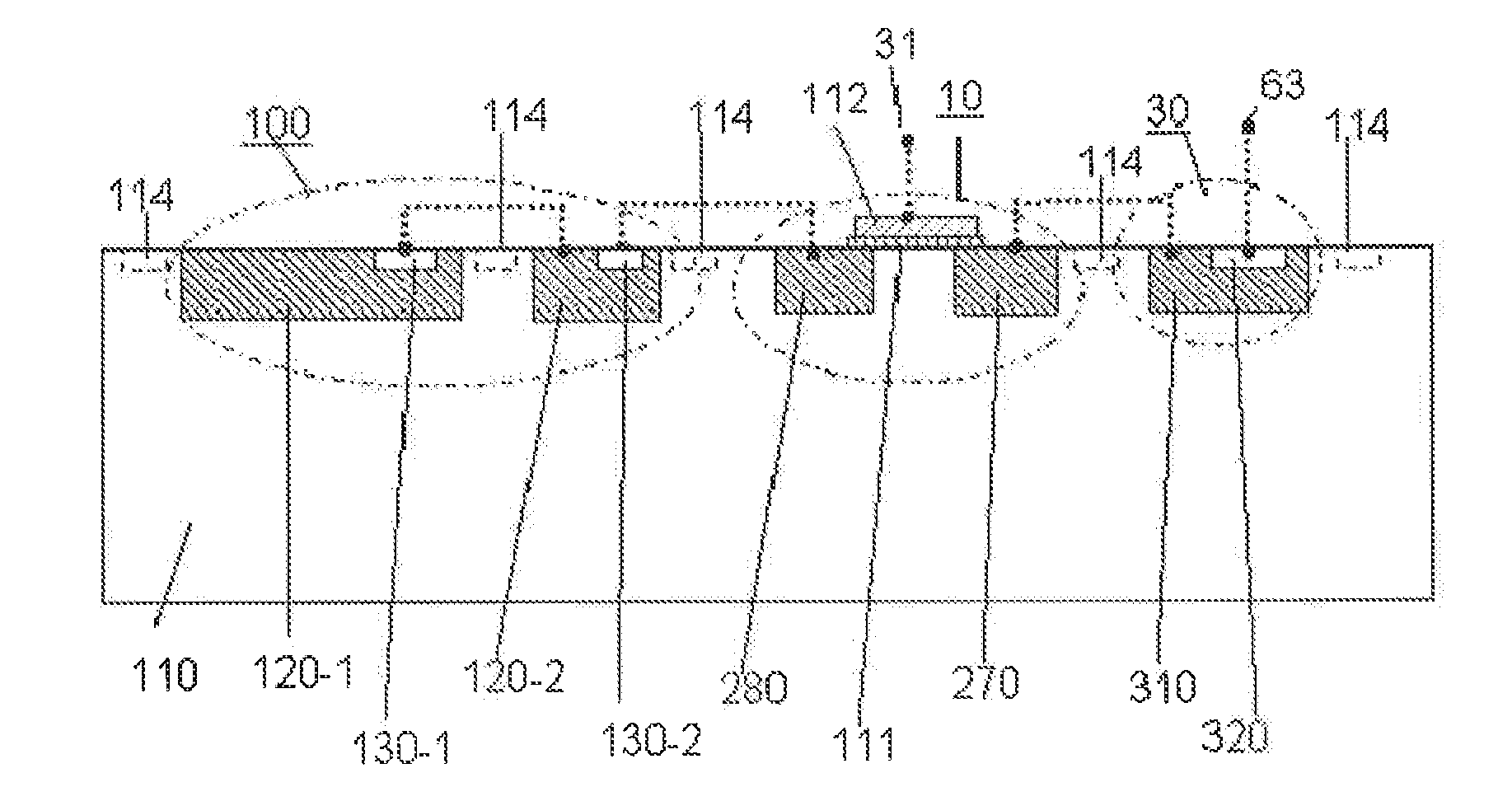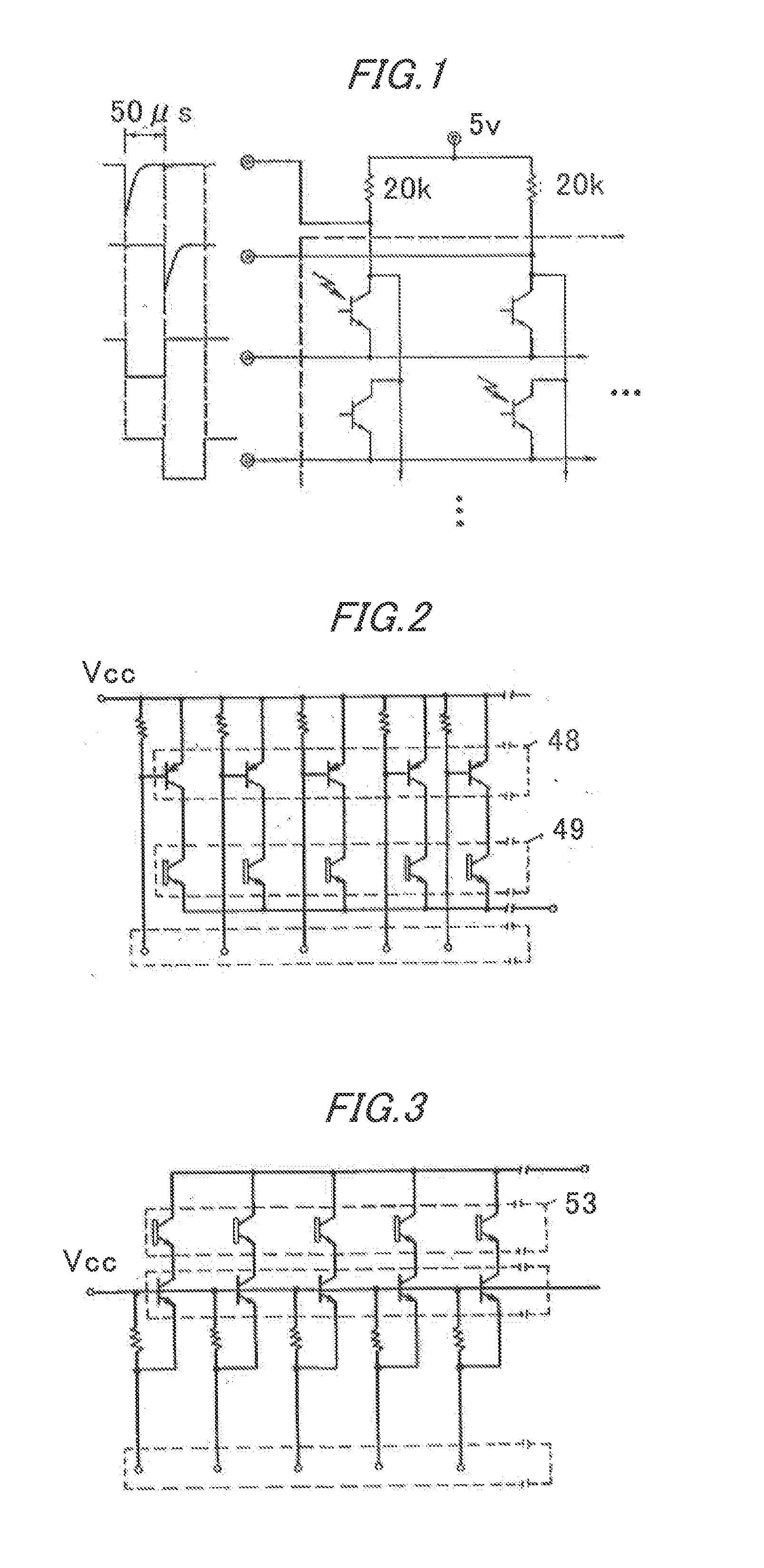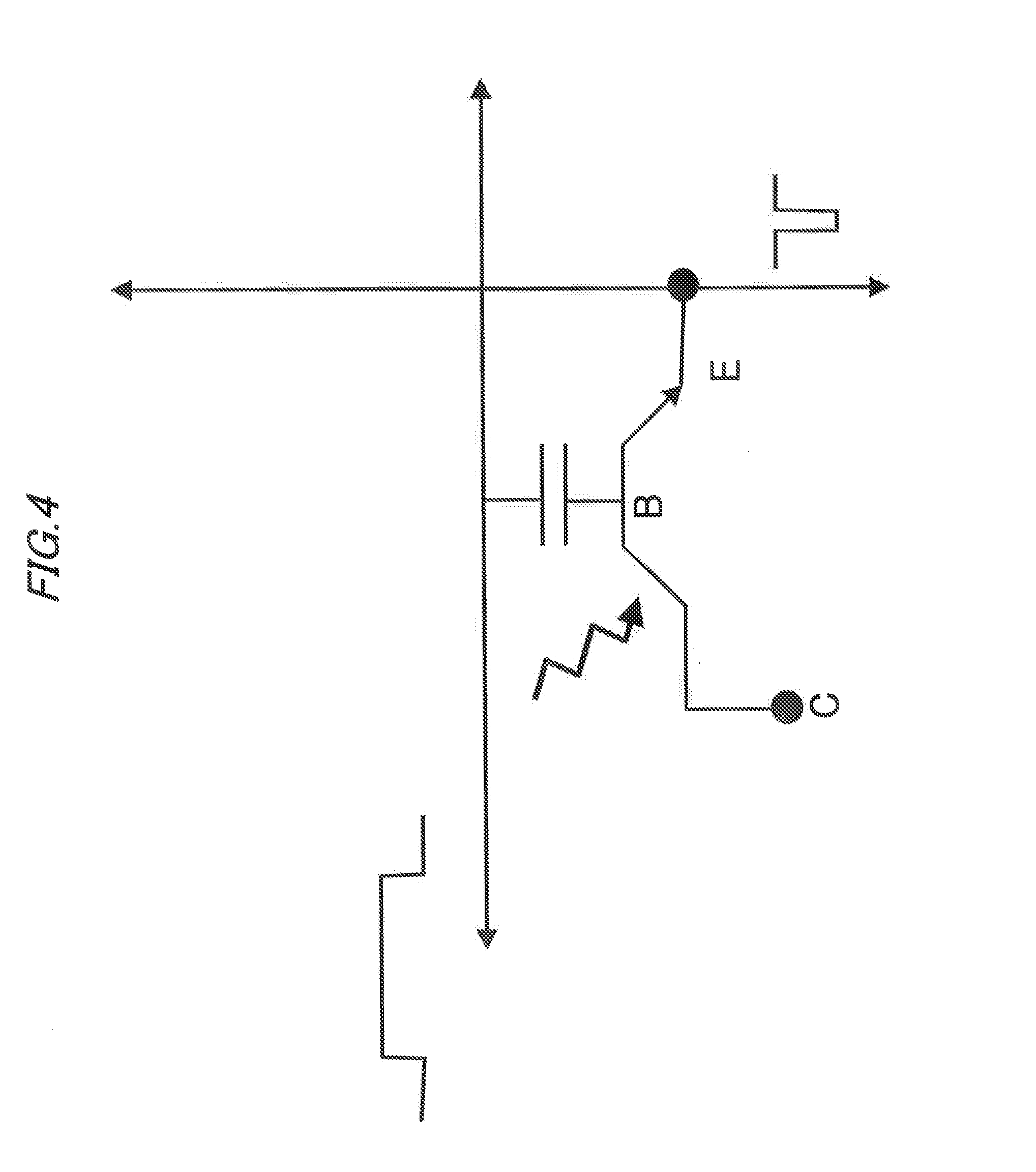Photoelectric conversion cell and array, reading method therefor, and circuit thereof
a conversion cell and array technology, applied in the direction of radio frequency control devices, instruments, television systems, etc., can solve the problems of limiting the accuracy of information detection, limiting the free range of mutual pixel interference and information detection at low illumination, and the collector is difficult to be sufficiently thick in a direction, so as to prevent the miller effect, increase the reading delay, and easy to separate the signal from the noise
- Summary
- Abstract
- Description
- Claims
- Application Information
AI Technical Summary
Benefits of technology
Problems solved by technology
Method used
Image
Examples
embodiments
[0329]A structure example A1str of the photoelectrical conversion cell A1 of the present invention is described below. More specifically, the photoelectric conversion cell A1str includes, at least, a first semiconductor region having a first surface and a first conductivity type, one or plural second semiconductor regions, each having a second surface, and a conductivity type opposite to the first conductivity type, and provided on or in the first surface of the first semiconductor region, one or plural third semiconductor regions, each having a third surface and the first conductivity type, each third semiconductor region provided on and / or in the second surface of the second semiconductor region, a seventh semiconductor region having a seventh surface and the conductivity type opposite to the first conductivity type, and spaced apart from the second semiconductor region, on or in the first surface of the first semiconductor region, an eighth semiconductor region having an eighth s...
PUM
 Login to View More
Login to View More Abstract
Description
Claims
Application Information
 Login to View More
Login to View More - R&D
- Intellectual Property
- Life Sciences
- Materials
- Tech Scout
- Unparalleled Data Quality
- Higher Quality Content
- 60% Fewer Hallucinations
Browse by: Latest US Patents, China's latest patents, Technical Efficacy Thesaurus, Application Domain, Technology Topic, Popular Technical Reports.
© 2025 PatSnap. All rights reserved.Legal|Privacy policy|Modern Slavery Act Transparency Statement|Sitemap|About US| Contact US: help@patsnap.com



